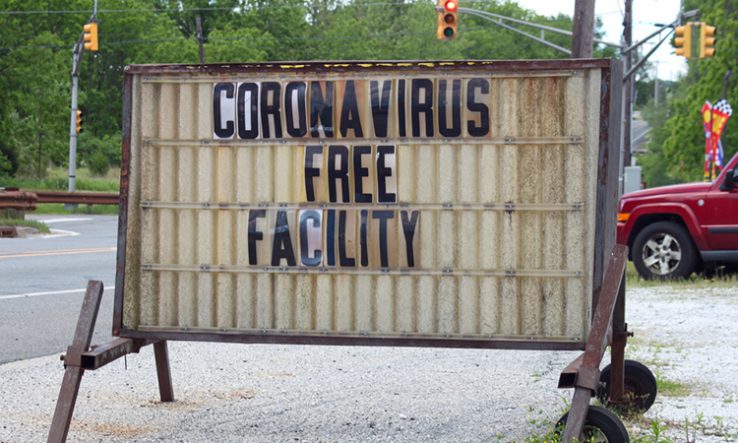
Image: Wirestock Images, via Shutterstock
Building resilient science means redesigning where and how researchers work, says David Payne
The coronavirus pandemic has presented the greatest challenge to the UK’s scientific community in living memory. In many ways, we have risen to that challenge magnificently.
Scientists at the Research Complex at Harwell, where I am director, have recently uncovered promising leads for treating Covid-19 in the form of modified nanobodies from llamas and a better understanding of antibody sites on the virus. Others working at the Research Complex and the Diamond Light Source have determined the structure of the viral spike proteins, sharing their results quickly and freely.
Our work fits into wider efforts to develop a vaccine and the search for approved drugs that are effective against the disease, such as dexamethasone. These are just a few examples of why the UK can be proud of its researchers’ contribution to the battle against the coronavirus.
The crisis has, however, presented another, more insidious problem. Research institutions and universities have been quick to adapt in the short term, scaling back on-site operations and developing ways to work productively at home. But we are finding it more challenging to adapt to the medium and long term. Building scientific resilience is now critical if our research infrastructure is to return to operating at pre-pandemic levels.
Next steps
Unlike many other labs and facilities, the Research Complex stayed open throughout the pandemic. This was achieved, in part, by quickly making small-scale but effective changes to the building infrastructure.
We replaced buttons for opening doors with hands-free infrared sensors. We installed toilet handles that release hand gel when used. We introduced a mandatory masking policy in late May and adapted hot-desking software to allocate and manage time in the lab.
All this, though, was just the first stage. The task now is to transform research campuses from being Covid-secure to being Covid-free. This can be done, for example, through a combination of site-wide temperature checks and direct viral testing, aimed at detecting infectious people as quickly as possible. The language deliberately mirrors the aspiration of a zero-accident culture: it’s an almost unachievable goal, but it sets a standard by which to measure success.
Research institutions cannot become islands in a sea of community transmission of the virus. Everyday life—transport, healthcare, shopping, restaurants, bars—presents infection risk. Just as organisations in those areas are doing their best, so must we.
As scientists, we have major advantages in technical expertise and knowledge of risk management. Many research institutions have the capability to implement rigorous testing programmes, and those that don’t should receive support from others to do so.
A Covid-free target has other benefits, not least increasing the confidence of the workforce to return to work on site. Interventions should be aimed at alleviating the concerns of the most anxious among those wanting to return to work. This would build resilient, inclusive scientific operations that allow everyone to feel safe.
Structural changes
As the analyses, postmortems and inquiries begin, it will be interesting to see how many institutional risk registers actually contained the word ‘pandemic’. I would wager few, if any.
This will surely change, but it will not alter the fact that our research infrastructure was not designed to cope with an emergency such as this. While laboratories typically have multiple changes of fresh air per hour, most university buildings have, understandably, been designed to use energy and space as efficiently as possible—by, for example, maximising the number of desks per square metre and using recirculated air, often at the expense of openable windows.
We now face problems that were not considered when our physical spaces were designed and built. Solving them will not be easy; this is another reason why testing will be crucial.
Prolonged shutdowns and absences from the workplace also threaten some of the less tangible and more easily overlooked aspects of strong research: a culture and community based on shared, in-person experiences. A huge effort has gone, with the best of intentions, into creating virtual communities, but there is only so much you can do via a video link.
The years ahead will bring many challenges, both as predictable consequences of the pandemic—around mental health and the loss of momentum for early-career researchers, to name but two—and unforeseen effects. To meet them, it is not enough to just be scientifically strong in a crisis today. We need to be scientifically resilient for the future.
David Payne is director of the Research Complex at Harwell and a professor of materials chemistry at Imperial College London
This article also appeared in Research Fortnight